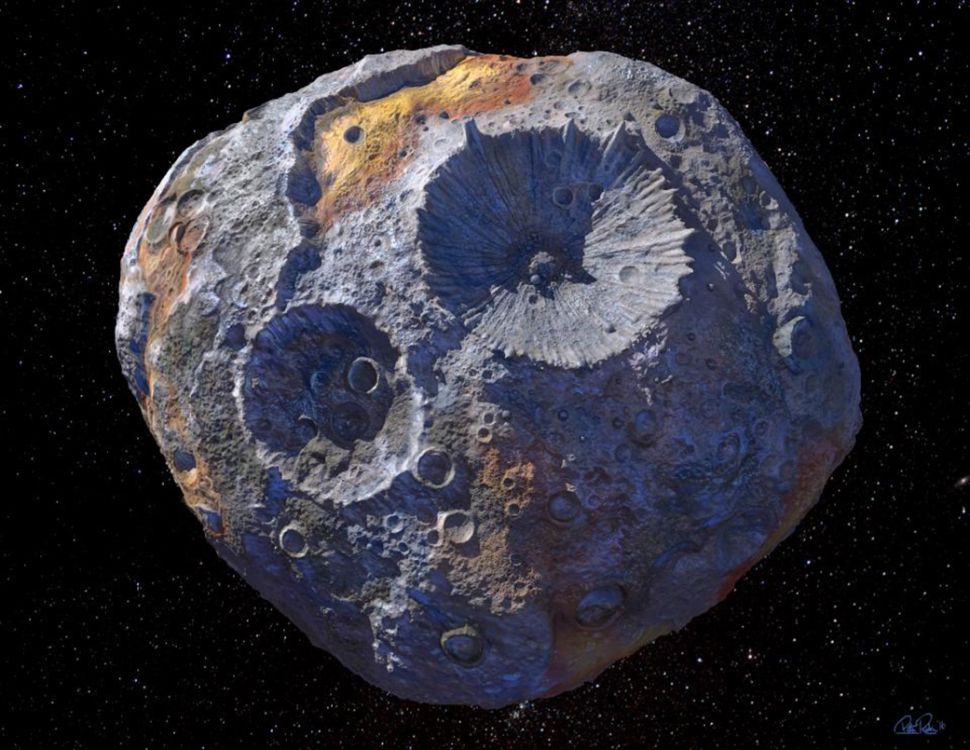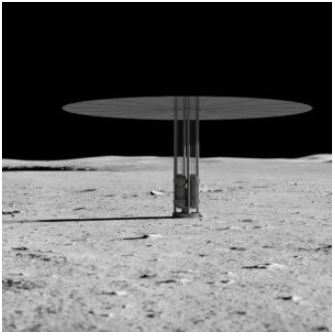Six Telescope Launches to Watch this Decade
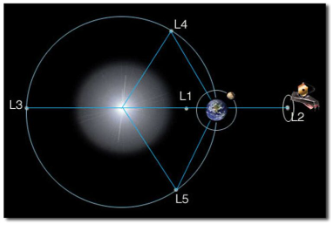
This article was first published in Oct. 2021 as part of The Space Report Q3 2021
Barring schedule slips, a half dozen of the most powerful telescopes ever imagined will launch this decade. The most notable, NASA’s James Webb Space Telescope, is set to launch Dec. 18, 2021, kicking off a new era of cosmology for scientists around the world. James Webb and five other telescopes are slotted to fly at Lagrange Point 2 some 1.5 million kilometers (932, 056 miles) from Earth, using this remote vantage point to study deep-space targets.
NASA and other space agencies have launched roughly a dozen telescopes since 1990 with the purpose of studying deep space beyond our solar system. In-space observatories can collect infrared, X-ray, and other radiation types absorbed by Earth’s atmosphere, enabling more scientific research than their terrestrial counterparts. Astronomers are increasingly using unique vantage points available in space to expand understanding of the cosmos beyond what can be learned from Earth’s surface.
While space has its advantages, the harsh environment and demanding, high-fidelity data sought off world make for extreme engineering challenges. Further complicating these missions, scientists are increasingly seeking telescopes launched to the gravitationally stable region of Lagrange Point 2. There the planet’s reflection won’t disturb sensitive detections, but any hardware failures will be fatal (L2 currently is too remote for repairs).
The L2 location will allow the world’s largest space agencies to conduct deep-space missions with as little interference from solar radiation or Earth’s backscatter of radiation and particles as possible. To obtain next generation observations, engineers have designed a range of new technologies, including novel cooling systems, foldable mirrors and high-tech pointing gear. Future telescopes also have greater onboard storage and downlink capabilities, increasing the amount of data scientists can collect.
Many of these telescopes are dedicated to understanding the early universe shortly after the Big Bang, and/or to the study of exoplanets, including their discovery, characteristics, and categorization. Some missions will overlap with other telescopes, but with the intent of being complementary as opposed to duplicative.
Here are the six biggest observatories launching to L2 this decade, what they aim to accomplish, and the technology needed for each to succeed*.
James Webb Space Telescope
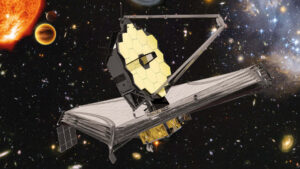
Credit: ESA
- Launch date: Dec. 18, 2021
- Type: Optical and Infrared/near infrared
- Mission life: Five years
- Mass: 6,500 kg
- Owner: NASA (ESA and the Canadian Space Agency are partners)
- Primary industrial partners: Northrop Grumman, Ball Aerospace,
Space Telescope Science Institute
When astronomers produced the iconic Hubble Deep Field in 1995, it taught them that the universe had far more galaxies than previously thought. That realization became the inspiration for the James Webb Space Telescope, an observatory 100 times more powerful than the Hubble Space Telescope that will peer back to the beginning of the universe.1
James Webb will pick up where Hubble left off , collecting imagery of galaxies too distant for Hubble’s optical sensor. Light from the oldest galaxies is so stretched by the expansion of the universe (a change called redshift) that the wavelengths became elongated past the visible spectrum and are now only detectable as infrared radiation (i.e., heat). James Webb’s massive 6.5-meter mirror (just over six times larger than Hubble’s) is coated with gold, a thermally sensitive material, to detect those infrared beams. An intricate, multilayer sunshield will block heat from our own sun, protecting faint, deep-space measurements from thermal interference.
Along with galaxies, James Webb’s advanced sensors will enable astronomers to see a wide range of cosmic phenomenon, including protoplanets forming inside dusty nebulae, distant supernovae from the universe’s first stars, and supermassive black holes generating violent interstellar winds.2, 3 NASA plans to use James Webb for a host of studies too challenging or time-intensive for Hubble.
Building James Webb involved overcoming several engineering difficulties. The telescope’s sunshield, measuring the size of a tennis court, uses five membranes of Kapton, a thermal-resistant plastic, to block the sun’s rays.4 Remanufacturing of the sunshield’s primary support structure in the early 2010s — coupled with fixing tears in the sunshield in 2018 and in January 2021— required extra time, but NASA is now confident the system will passively cool James Webb’s mirror and three of its four instruments down to only 36 Kelvin (-237 degrees Celsius). 5, 6
James Webb also requires an intricate active cooling system called a cryocooler to chill one sensor, the Mid-Infrared Instrument, even further down to 6 Kevin. Valve leaks, under performance and other issues plagued the device from 2006 to early 2021, when the last technical risks were retired.7, 8 The cryocooler circulates ultra-cold Helium through 20 meters of thin tubing, chilling the telescope so it can detect faint thermal signals from celestial objects.9
James Webb’s aperture consists of 18 hexagonal mirrors, each equipped with its own actuators to independently tweak angles, curvature, and positioning.10 The mirrors unfold in a honeycomb pattern, overcoming a major limitation of past telescopes — launch vehicle volume constraints. The origami-style approach could pave the way for future large telescope ideas previously considered too big to launch.
Euclid
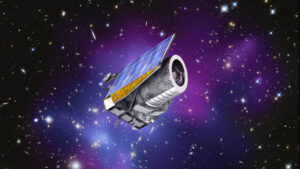
Credit: NASA
- Launch date: H2 2022
- Type: Optical and near-infrared
- Mission life: Six years
- Mass: 2,200 kilograms
- Owner: ESA
- Primary industrial partners: Thales Alenia Space Italia (prime) and us Defence and Space France (payload)
An estimated 27% of the mass in the universe is believed to be dark matter — a so-far undetected, but gravitationally influential type of matter that dominates the universe. Another 68% of the universe is believed to be dark energy, thought to be a leading cause of the expansion of the universe.11
ESA’s Euclid telescope aims to put a spotlight on dark matter and dark energy, metaphorically speaking. The orbital observatory will image more than a third of the night sky in an effort to map the geometry of the “dark universe.”12 And while accurate pointing is important for any telescope, it is extremely critical for Euclid.
While Euclid and NASA’s James Webb will complement each other, Euclid is purpose-built specifically for deep-space galactic observations. ESA anticipates Euclid will image billions of galaxies as far as 10 billion light years away, collecting enough data about the large-scale distribution of galaxies to gauge the influence of dark energy and dark matter (neither of which can be seen). 13
Manufacturers built Euclid’s payload module out of silicon carbide, a material that holds its shape well even when changing temperature. Metal, in contrast, expands and contracts in response to heat, which can degrade the focus of optical sensors. ESA used silicon carbide on its Herschel telescope in 2009 and Gaia in 2013, but not to the extent seen on Euclid.14
Euclid will also need more stability than what’s obtainable with reaction wheels alone, since such commonly used components can introduce micro-vibrations that would affect observations. Spanish supplier Sener developed a “fine guidance sensor” to hone Euclid’s movements after the telescope slews from one target to another. The fine guidance sensor helps Euclid aim at targets with extremely high precision for up to 700 seconds.15
Nancy Grace Roman Space Telescope
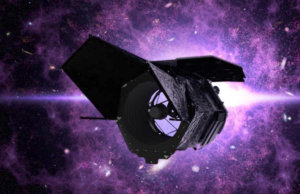
Credit: NASA
- Launch date: mid-2020s
- Type: Optical and Infrared
- Mission life: Five years
- Mass: 4,200 kg
- Owner: NASA
- Primary industrial partners: TBA
After James Webb, NASA’s next big telescope aims to make deep-space observations on a scale never before seen. Current designs call for a telescope with Hubble-class resolution, but with a field of view equal to 100 Hubbles, plus infrared imaging.16
The Nancy Grace Roman Space Telescope, named after NASA’s first chief astronomer,17 will leverage new technologies to make it lighter, sharper, and faster than previous orbital telescopes. It will also carry an experimental coronagraph —devices used to block starlight — to pave the way for future exoplanet finders.18
NASA plans to use Roman to conduct large-scale surveys of the universe without sacrificing image quality. What takes Hubble 21 days to image, Roman will complete in under 30 minutes, according to the Space Telescope Science Institute.19 And, by working in concert with other observatories, Roman will help provide a “big picture” understanding of the universe while finding interesting targets for others like James Webb to do more concentrated studies.
At 2.4 meters across, Roman’s primary mirror will be the same size as Hubble’s. The difference is Roman will direct observations onto 18 detectors with a collective 300 million pixels, giving the telescope its wide field of view.20 NASA expects Roman’s mirror will weigh one fourth that of Hubble’s thanks to newer, lightweight building materials. Additionally, the mirror will get a boost in image quality thanks to a network of around 2,000 tiny piston-like actuators that can change its shape to correct imperfections.21
Roman’s demonstrator coronagraph will use the telescope’s mirrors and a set of masks to isolate starlight from distant exoplanets. Once a planet is found, the coronagraph will also enable spectroscopic measurements of exoplanet atmospheres, helping scientists search for Earth-like worlds. 22
NASA anticipates Roman will collect 20,000 terabytes of data, a large jump from the 172 terabytes Hubble produced over 30 years and the 1,000 terabytes projected to come from James Webb.23 All Roman observations are expected to be available in days, avoiding long wait times so astronomers can conduct more research faster than previously possible.
PLATO
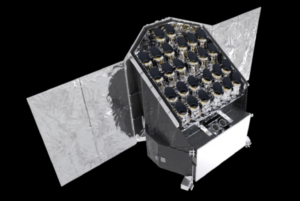
Credit: ESA
- Launch date: 2026
- Type: Optical
- Mission life: Four years
- Mass: 2,150 kg
- Owner: ESA
- Primary industrial partners: OHB, Thales Alenia Space, Ruag Space, DLR
Europe’s next planet-hunter, the PLAnetary Transits and Oscillations of stars telescope (PLATO), will continue the search for Earth-like worlds but with more detail than earlier purpose-built planet hunters. PLATO will carry an array of 26 cameras, each equipped with four highly sensitive light detectors called Charged Coupled Devices. Once launched, PLATO will carry a collective 2.12 gigapixels — more than twice that of the current record holder, ESA’s star-mapper telescope Gaia, launched in 2013.24
PLATO’s mission is to find planets as they transit in front of their host stars, causing tiny but detectable dips in brightness. Large, fast-moving exoplanets are easiest to spot because they block the most light and require the shortest observations. PLATO will search for difficult to spot planets that are smaller and have longer orbits.
PLATO will monitor hundreds of thousands of stars continuously for up to two years, with an emphasis on finding planets orbiting in their star’s habitable zones (where liquid water can exist on a planet’s surface).25 The majority of PLATO’s 24 cameras will take pictures every 25 seconds, while the last two cameras will target the brightest stars with shorter exposures of 2.5 seconds each.
For planets that orbit their stars within 90-500 days, PLATO is simulated to outperform other exoplanet hunter telescopes Kepler by a factor of 10 and TESS by a factor of 1000.26 Additionally, the observatory will study stellar seismic activity (asteroseismology) to further scientific understanding of stellar internal structures and their evolution.27 The German space agency, Deutsches Zentrum für Luft – und Raumfahrt (DLR), is leading a consortium of European research centers and institutes in providing the scientific instrument.28 Once complete, PLATO will sport the largest digital combined camera ever flown in space, according to ESA. 29
LiteBIRD
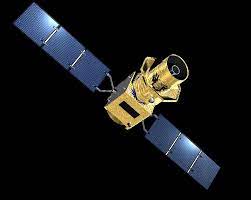
Credit: ESA/JAXA
- Launch date: 2028-2029
- Type: 40 to +400 GHz
- Mission life: Three years
- Mass: 2,600 kg
- Owner: JAXA
- Primary industrial partners: JAXA
In 2016, scientists observed gravitational waves for the first time, proving that major cosmic explosions can send ripples through the fabric of space-time. 30 The Japan Aerospace Exploration Agency (JAXA) aims to make the first-ever observations of quantum-induced gravitational waves with LiteBIRD, the “Lite” satellite for the study of B-mode polarization and inflation from cosmic background Radiation Detection.31
LiteBIRD’s focus is on “primordial cosmology,” studying the origins of the universe by mapping the cosmic microwave background radiation left over from the Big Bang (called CMB). Specifically, LiteBIRD will look for polarization in the cosmic background radiation, which should have imprints left by gravitational waves from the beginning of the universe.32 Those imprints are called B-modes, and if found, will sharpen understanding of inflation — an exponentially quick expansion of the universe that occurred for a fraction of a second after the Big Bang.
To detect B-modes, LiteBIRD will use a trio of telescopes covering a wide range of spectrum (from 34 to 448 gigahertz) in search of extremely faint CMB readings. All three LiteBIRD telescopes need to be cooled down to 5 degrees Kelvin to detect those signals. Th e observatory will use three protective conical structures called “V-grooves” to reduce heat down to 30 Kelvin, complemented by mechanical cryocoolers that drop temperatures to 5 Kelvin. 33
LiteBIRD is the spiritual successor to ESA’s Planck observatory, which operated from 2009 to 2013. The future observatory will be the first to use a rotating half wave plate for polarization splitting, a technology that reduces noise, resulting in cleaner signals.34 JAXA plans to launch the observatory on an H3 rocket from Mitsubishi Heavy Industries.
ARIEL
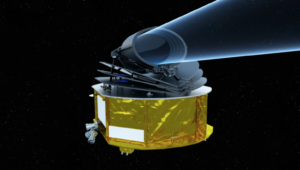
Credit: ESA
- Launch date: 2029
- Type: Optical and Infrared
- Mission life: Four to six years
- Mass: 1,500 kg
- Owner: ESA
- Primary industrial partners: TBD (U.K. is leading the science the coordination of payload development)
Assuming ESA’s Atmospheric Remote-sensing Infrared Exoplanet Large-survey (ARIEL) telescope launches on schedule in 2029, it will mark the agency’s third exoplanet observatory launched in 10 years (following PLATO and CHEOPS). The difference with ARIEL is that its purpose is not exoplanet discovery, but to conduct detailed studies of worlds found by earlier missions.35
Astronomers plan to study up to 1,000 exoplanets, analyzing light as it passes through their atmospheres to glean details about their temperatures and chemical compositions. That information will fill knowledge gaps about the relationship between planetary chemistry and stellar environments.36
ARIEL is designed to detect water vapor, carbon dioxide, methane and other molecules in exoplanet atmospheres. Some planets will get closer studies, looking into seasonal patterns, including atmospheric variations and weather.
ESA has yet to announce a manufacturer for ARIEL, but much of the telescope’s design is based on heritage components from other observatories. The telescope’s infrared spectrometer will adapt hardware from the NEOCam mission, a fine guidance system from Euclid, and cryogenic technology from James Webb.37
ESA plans to launch ARIEL on an Ariane 62 rocket.
 Caleb Henry is a senior analyst for Quilty Analytics and a former staff writer for Space News.
Caleb Henry is a senior analyst for Quilty Analytics and a former staff writer for Space News.
- Crazy Boat Pictures & Northrop Grumman. “Into the Unknown.” August 2018. Accessed Sept. 15, 2021
- Tavernier, Lyle. “Learn About the Universe with the James Webb Space Telescope.”
September 2021. https://www.jpl.nasa.gov/edu/news/2021/9/30/learn-about-the-universe-with-the-james-webb-space-telescope/. Accessed Sept. 23, 2021. - “NASA’s Webb to Study Quasars and Their Host Galaxies in Three Dimensions.” August 2020. https://www.nasa.gov/feature/goddard/2020/nasas-webb-to-study-quasars-and-their-host-galaxies-in-three-dimensions. Accessed Sept. 23, 2021
- “First Sunshield Layer Completed for NASA’s James Webb Space Telescope.” August 2015. https://investor.northropgrumman.com/news-releases/news-release-details/firstsunshield-layer-completed-nasas-james-webb-space-telescope. Accessed Sept. 8, 2021
- “James Webb Space Telescope: Project Nearing Completion on but Work to Resolve Challenges Continues.” May 2021. https://www.gao.gov/products/gao-21-406. Accessed Sept. 15, 2021
- James Webb Space Telescope.” December 2017. https://www.ball.com/aerospace/Aerospace/media/Aerospace/Downloads/D0801__JWST_1217.pdf?ext=.pdf. Accessed Sept. 15, 2021
- “James Webb Space Telescope: Project Facing Increased Schedule Risk with Significant Work Remaining.” March 2015. https://www.gao.gov/assets/gao-15-483t.pdf. Accessed Oct. 4, 2021
- “James Webb Space Telescope: Project Nearing Completion but Work to Resolve Challenges Continues.” May 2021. https://www.gao.gov/products/gao-21-406. Accessed Sept. 15, 2021
- “How Cold Can You Go? Cooler Tested for NASA Telescope.” June 2016. https://www.nasa.gov/feature/jpl/how-cold-can-you-go-cooler-tested-for-nasa-telescope. Accessed Oct. 4, 2021
- “James Webb Space Telescope.” December 2017. https://www.ball.com/aerospace/Aerospace/media/Aerospace/Downloads/D0801__JWST_1217.pdf?ext=.pdf. Accessed Sept. 15, 2021
- “Dark matter.” https://home.cern/science/physics/dark-matter. Accessed Oct. 3, 2021
- “Airbus-built telescope for ESA’s Euclid mission takes shape.” November 2019. https://www.airbus.com/newsroom/press-releases/en/2019/11/airbusbuilt-telescope-for-esaseuclid-mission-takes-shape.html. Accessed Sept. 11, 2021
- “Euclid telescope ready for extreme space environment.” September 2021. https://www.esa.int/Science_Exploration/Space_Science/Euclid_telescope_ready_for_extreme_space_environment. Accessed. Sept. 11, 2021
- “The Euclid space telescope is coming together.” July 2020. https://www.esa.int/Science_Exploration/Space_Science/The_Euclid_space_telescope_is_coming_together. Accessed Sept. 6, 2021
- R. Sánchez Maestroa, A. Agenjo Díaza, C.A. Ardura Lumerasa, L. Meijerb, M. Saponarac, C. Rossod, G. Saavedra Criadod. “Euclid Dark Universe Mission – High stability and pointing performance control.” Paper presented at the 70th International Astronautical Congress (IAC), Oct. 21-25, 2019.
- Balzer, Ashley. “A Tale of Two Telescopes: WFIRST and Hubble.” April 2020. https://www.nasa.gov/feature/goddard/2020/a-tale-of-two-telescopes-wfirst-and-hubble. Accessed Sept. 12, 2021
- “NASA Telescope Named For ‘Mother of Hubble’ Nancy Grace Roman.” May 2020. https://www.nasa.gov/press-release/nasa-telescope-named-for-mother-of-hubblenancy-grace-roman. Accessed Sept. 25, 2021
- Space Telescope Science Institute. “Science Writers’ Workshop on the Roman Space Telescope.” October 2020. https://www.youtube.com/watch?v=KK9tIMJl13E&t=1020s. Accessed Sept. 25, 2021
- “Roman expanding our view presentation slides with notes.” https://www.stsci.edu/files/live/sites/www/files/home/roman/_documents/roman-expanding-our-view-presention-slides-with-notes.pdf. Accessed Sept. 25, 2021
- “Transcripts of WFI FINAL Roman_1.” https://svs.gsfc.nasa.gov/vis/a010000/a013200/a013235/WFI_Roman_HTML_Transcript.html. Accessed Sept. 25, 2021
- Space Telescope Science Institute. “Science Writers’ Workshop on the Roman Space Telescope.” October 2020. https://www.youtube.com/watch?v=KK9tIMJl13E&t=1020s. Accessed Sept. 25, 2021
- “Roman expanding our view presentation slides with notes.” https://www.stsci.edu/files/live/sites/www/files/home/roman/_documents/roman-expanding-our-view-presentionslides-with-notes.pdf. Accessed Sept. 25, 2021
- Space Telescope Science Institute. “Science Writers’ Workshop on the Roman Space Telescope.” October 2020. https://www.youtube.com/watch?v=KK9tIMJl13E&t=1020s. Accessed Sept. 25, 2021 “Roman expanding our view presentation slides with notes.”
- “Delivery of First Detectors for PLATO’s Exoplanet Mission.” April 2019. https://sci.esa.int/web/plato/-/61280-delivery-of-first-detectors-for-platos-exoplanet-mission.
- “Construction of Europe’s Exoplanet Hunter PLATO begins.” October 2018. https://sci.esa.int/web/plato/-/60708-construction-of-europe-s-exoplanet-hunter-plato-begins. Accessed Sept. 12. 2021
- Dandouras, Iannis. Blanc, Michel. Fossati , Luca. Gerasimov, Mikhail. Guenther, Eike. Kislyakova, Kristina. Lammer, Helmut. Lin, Yangting. Marty, Bernard. Mazelle, Christian. Rugheimer, Sarah. Scherf, Manuel. Sotin, Christophe. Sproß, Laurenz. Tachibana, Shogo. Wurz, Peter. Yamauchi, Masatoshi. “Future Missions Related to the Determination of the Elemental and Isotopic Composition of Earth, Moon and the Terrestrial Planets.” September 2020. https://boris.unibe.ch/148400/1/Dandouras2020_Article_FutureMissionsRelatedToTheDete.pdf. Accessed Sept. 14, 2021
- Reesea Carsten. Mottaghibonabb, Amir. Bleicherc, Gerhard. Junkerd, Jan. Nicolaye, Oliver. Sacchettf, Andrea. Urbinatig, Fabrizio. Gaidog, Marco. Tetii, Daniele. Winklerj, Andreas. “PLATO Spacecraft : Optical Bench Demonstrator for the Characterization of Thermo-Elastic Stability.” Paper presented at the 70th International Astronautical Congress (IAC), Oct. 21-25, 2019
- “PLATO – Search for Twins of the Earth.” https://www.dlr.de/rd/en/desktopdefault.aspx/tabid-2448/3635_read-48407/. Accessed Sept. 14, 2021
- “Delivery of First Detectors for PLATO’s Exoplanet Mission.” April 2019. https://sci.esa.int/web/plato/-/61280-delivery-of-first-detectors-for-platos-exoplanet-mission. Accessed Sept. 14, 2021
- Alvarez-Gaume, Luis. “Detection of Gravitational Waves.” February 2016. https://home.cern/news/opinion/physics/detection-gravitational-waves. Accessed Sept. 6, 2021
- Hazumi, Masashi. “LiteBIRD Vision and Overview.” July 2019. https://litebird.isas.jaxa.jp/wiki/local/20190701_Hazumi_LiteBIRD_Vision_and_Overview.pdf. Accessed Sept. 6, 2021
- Columbroa, Fabio. de Bernardisa, Paolo. Lamagnaa, Luca. Masia, Silvia. Paiellaa, Alessandro. Piacentinia, Francesco. Pisano, Giampaolo. January 2021. “A Polarization Modulator Unit for the Mid- and High-Frequency Telescopes of the LiteBIRD mission”
- “LiteBIRD satellite: JAXA’s new strategic L-class mission for all-sky surveys of cosmic microwave background polarization.” January 2021. https://arxiv.org/pdf/2101.12449.pdf. Accessed Sept. 6, 2021.
- Osservatorio di astrofisica e scienza dello spazio. “LiteBIRD.” Last updated March 2021.
https://www.oas.inaf.it/en/projects/litebird-en/. Accessed Sept. 7, 2021. - UK Space Agency. “UK-led space telescope to unravel mysteries of the cosmos.” November 2020. https://www.gov.uk/government/news/uk-led-space-telescope-tounravel-mysteries-of-the-cosmos. Accessed Oct. 3, 2021
- “ARIEL Moves from Blueprint to Reality.” November 2020. https://sci.esa.int/web/ariel/-/ariel-moves-from-blueprint-to-reality. Accessed Sept. 17, 2021
- ESA. ARIEL Definition Study Report. September 2020 https://sci.esa.int/documents/34022/36216/Ariel_Definition_Study_Report_2020.pdf. Accessed Sept. 17, 2021

